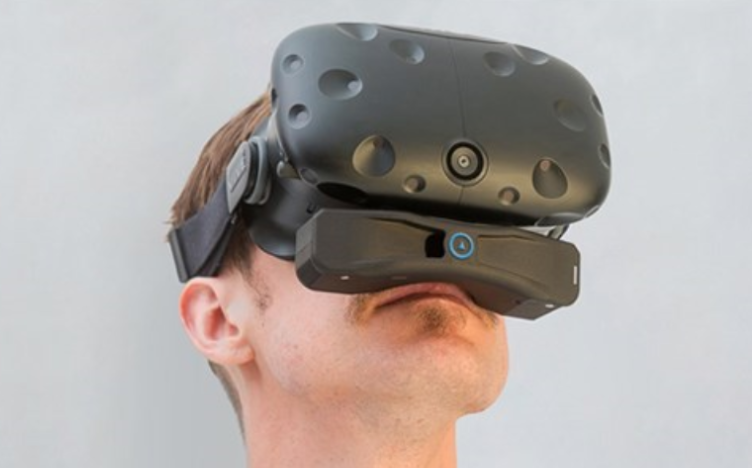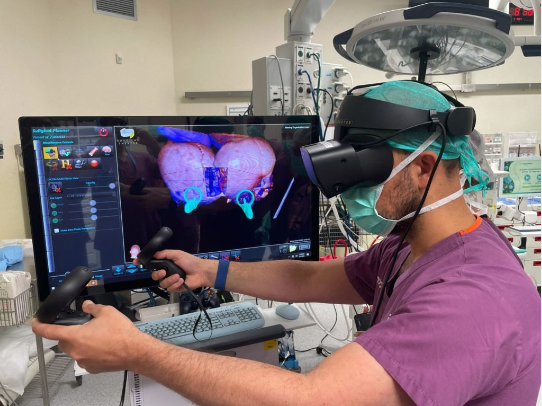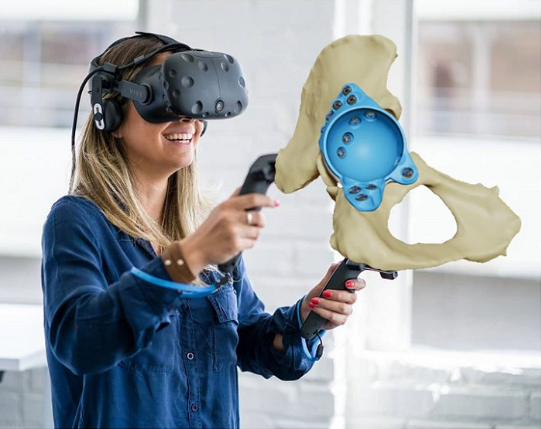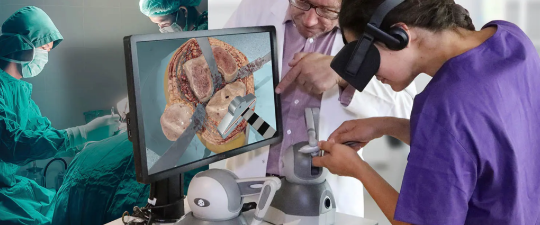
As a concept, the metaverse is gaining ground. After being popularized by Facebook founder Mark Zuckerberg, countless articles have been written about it. A cynic may very well think that, after Facebook became an online wasteland and Instagram lost out in relevance and growth to TikTok, the metaverse may be a desperate play to maintain some relevance and stave off the collapse of the firm now called “Meta.” Facebook achieved over $100 billion in revenue in 2021 before the stock dropped by over half and the company posted lower revenue results. A new dream would seem to be a timely thing for a company destined to crater.
However, given Meta’s size and the firms and talking heads that have jumped onto the metaverse bandwagon, the concept could still have legs. It is a seductive dream for Wall Street—if they buy it—and could be a vision of the future of the internet. So, what is the metaverse? From the tea leaves, can we distill its impact on 3D printing? Let’s have a go at it.
What Is the Metaverse?
The metaverse is a series of interconnected 3D worlds, accessed via virtual reality (VR) and augmented reality (AR). The former, VR, represents a synthetic environment made up of images, video, sounds, and other sensations that pass to a user’s body to make them believe that they are inhabiting or interacting with a computer program that indistinguishable from the physical world. In contrast, AR represents a layer of digital information, interaction, or sensation overlayed onto a user’s immediate physical environment.
VR can make you believe that Zombies are chasing you while you’re on the moon, while AR puts the zombies in your living room and lets you shoot them using a paperweight. The AR application that you may have tried is Pokemon GO, in which digital Pokemon are superimposed onto the world through your smartphone. By looking at your phone, you could see a Pokemon at your local fountain. Your VR experience has probably been an awkward stumble at your local mall while playing a game.
Currently, both of these digital interfaces are accessed using headsets, of which millions are being distributed. Applications in AR and VR are rather crude, however, and there is a great deal of fragmentation between these different apps, headsets, developers, and experiences.

These competing and sometimes complementary display and experience methods are both in development by Microsoft, Meta, HTC, Samsung, and many other firms. Currently, standards are few and far in between. Whereas, there are rigs or VR treadmills to simulate movement in a game, most of the work is focused on the headsets themselves and assumes that the user is either ambulatory or sedentary. In addition to games, the primary focus areas of these technologies are in training, especially for work, flight, medical or military training. There are many other possible industries and applications out there, but the industry is still pretty nascent.
Having said that headset shipments reportedly surpassed 11 million units last year. Estimates on the total revenue of the industry surpass $60 billion. However, if you delve deeper into stories, reports, and analyses, no one seems to be able to articulate very well what we will actually do all day in the metaverse.
Will the Metaverse Succeed?
Right now, we don’t know if this market will be a success. We also don’t really know what applications will actually pull people into the metaverse. What equivalents to email will there be that can act as handy anchor applications to keep users returning to the metaverse? This we do not know either.
Some apps seem to point to some future utility. Take Nightsky, which superimposes labels for stars and constellations onto the sky above a user’s head. Meanwhile, Inkhunter makes it possible to visualize how tattoos look on a user’s body seem to point to many potential commercial uses of AR. AR especially positions itself at the shoreline between bits and bytes, or the virtual and the real. Undoubtedly, there will be very many potential touch points there—whether it be you setting your thermostat, checking the number of footsteps you’ve taken today, or buying new products. The virtual goods industry is also very large, perhaps even reaching $38 billion. So, there seems to be a lot of potentials there.

However, this does not address the core issue: will we ever really see a unified interoperable—or even remotely powerful—walled garden-like experience that would qualify as a “metaverse.” Perhaps, we are witnessing the growth of apps that enrich the world with deeper content using smartphones, while a subset of gamers now wear a headset to playing a XBox.
The online games industry is also a fantastical affair, but it is not an island. It depends on the likes of Samsung and Apple for most of the gaming hardware, as well as Google and Apple for operating systems and app stores. Obviously, Meta and the rest want to be the App Store for the coming 3D world.
This is an obvious play. But if the metaverse does happen, it doesn’t have to be a huge shift for everyone on the world. 7.62 billion people already have a cellphone. Will that number have a headset? I think not because the utility is lower. Even if headsets did become popular, all of the cellphone makers would pile from handset to headset—and what would change? Would someone be able to supplant Apple OS and the app store faster than it would take the wealthiest company in the world to play catch up?
Even if the metaverse doesn’t become ubiquitous, it could still very well be profitable. There are only about 117 million PlayStation 4 consoles in the world, and only19 million Playstation 5s. Seen in this way, console gaming is a rather marginal activity compared to apps played via cel phones. However, even with walled gardens set up by the likes of Nintendo and Sony, there’s still a great deal of money to be made.
On the whole, I’m intensely skeptical about the emergence of a complete metaverse. Immersive escape will be an activity for some sometimes. I just can’t believe that humanity will be entering the Wall-E scenario completely. I also don’t find the immersion compelling outside of pure gaming. The more you spend immersed ,the less exciting it will be and the more humdrum the details of that virtual world will be. So, to me, the major impact will be through AR interaction with our information sources and with the world around us. In effect, we could add an optionally-viewable layer of context—and advertising—over the intensely populated parts of our world.
Should 3D Printing Have a Metaverse Strategy?
You may be old enough to remember Second Life, a world where you can parade around a virtual avatar and interact with other users. At one point, people were spending thousands of dollars buying real estate and goods in Second Life and other platforms. IBM, Accenture, and other firms opened virtual offices in the platform, while no one was really about to articulate why it would be useful. I remember, in an old job, we tried to organize a meeting in Second Life to check out the possibilities and we were simply unable to because we couldn´t get everyone’s fantastical outfits to render. Second Life was supposed to be a virtual world where we’d all work. Now, work is still a combination of Zoom and email.

The universe will explode, implode, shatter, and stay the same in ways that we will scarcely be able to imagine. On the whole, we’ll be continually surprised at how similar the future is to the past and just how little new futures affect core human behavior. Augmenting existing activity, such as conversing with family members via online phone calls, is the kind of thing that will always function even if they doesn’t function well, while completely new modes of being and interacting that change us tend to not function altogether. It is 2022 and my fridge still doesn’t buy my groceries. Yet I pay with my cellphone and it is the ultimate guardian and colander for my privacy.
I think that there is currently enough substance to AR and VR that we should have a metaverse strategy, but I would council you to please not write a metaverse white paper or jump on the potentially silly bandwagon of profiteers. First, hug a crypto kid. Then focus on your future.
What about 3D Printing and the Metaverse?
So, our metaverse strategy should be complementary and maximizes any and all possible deployments of the metaverse, whether they be big or small, niche or all encompassing. For that, we have to look at the key element that the metaverse is likely to provide, whichever level of success it has. The metaverse is likely to become a barrier to the digital and real worlds, a line where both those environments interact, yet are somehow distinct. There’s a vanishing point to where the real becomes virtual and vice versa. This will be surrounded by the metaverse.
3D printing is ideal for this beachhead. Generally, I’d advise you to not to try to be too opportunistic, rather than to exclaim from an ivory tower the wonders of a new world.
Headset Prototypes
One very concrete opportunity is in prototyping the myriad headsets and other devices that are in development. It would be an excellent business opportunity for anyone to be the scalable manufacturing partner for the many startups in the hardware arena. Most will fail, but it will allow them to pay you in order to gain experience in the meta market. I would actively seek partnerships if I were a materials supplier, OEM, or service in this space in order to find out what is real.
End-Use Parts
These headsets could potentially have polymer 3D printed end-use parts in them. Assemblies will tend to be complex. Light-weighting and a small form factor are at a premium because users will wear them for a long period of time. They are significantly heavier than the headphones and hats traditionally worn day-to-day. So, there could be opportunities to print complex, mass-saving assemblies at high volumes.
Mass-Customized Headsets
Comfort is also at a premium, so there could be opportunities to make more comfortable, mass-customised headsets that use 3D printing. Manufacturers might be able to offer technologically identical versions of existing headsets with more margin on them, allowing them to push for higher prices.
Heat Management
Heat management will be an issue for any electronics worn on the body, so 3D printed heatsinks may find a way into these kinds of devices. Additionally, heat management could benefit from 3D printed textures, grooves, or other structures that might make the devices fit better, while being cooler on the skin. This includes wicking geometries or devices.
User-Generated Content
User-created shapes, designs, products, and environments are sure to find a way into the mataverse´s commercial offering. These could obviously be 3D printed. This has been tried before in games but without much success. A user’s ability to create should be greater and more freeform through the use of VR tools. This may lead to more interest in 3D printing these creations.
Gaming Chairs
People have a lot of affection for gaming chairs, in which they spend many hours. They’ve also become a big product category. In VR and AR, what is the equivalent? Will people have a gaming box or area in which they play in which they spend many hours? This contact with the virtual world could also be customized via 3D printing.
On the whole, I’m intensely skeptical about the metaverse, especially as some sort of universal play land. However, enough money and interest is going to the metaverse that the additive sector can constructively engage that market to its benefit.